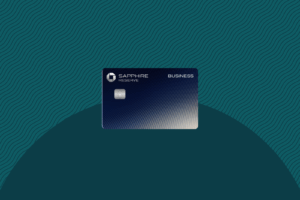Editor’s note: This is a recurring post, regularly updated with new information and offers.
Some people collect stamps, while others collect trading cards or coins. But if you’re like many of us at TPG, you likely collect credit cards.
With 10 credit cards in my wallet, chances are that I have more experience with credit than the average 20-something.
I’m proud to say that I have never missed a payment while juggling nearly a dozen credit cards. In turn, my credit cards have helped me earn thousands of points and miles for travel to places far and wide — all while building up an excellent credit score.
Based on what I know now, here are the six lessons about credit I would have liked to tell my younger self.
Get started
There’s a quote attributed to Norman Vincent Peale: “Any action is better than no action at all.” This principle applies to various facets of life, but it especially rings true for credit newbies.
For most of us, your first card probably won’t be The Platinum Card® from American Express. Not only does this luxury travel card come with a $695 annual fee (see rates and fees), it also requires a good to excellent credit score to qualify.
To be approved for a premium card like the Amex Platinum, you’ll need sufficient credit history to prove to issuers that you can make monthly payments. That’s why developing a credit strategy as soon as possible is important — even if you’re not applying for a premium card.

I started my credit journey on my 18th birthday. As a present to myself, I applied for a student credit card.
While it did not come with all the bells and whistles of my current cards (some of which carry $550-plus annual fees), it taught me invaluable lessons on managing my credit and mastering the art of financial responsibility.
Ultimately, your first card should have no annual fee on your first card, which means it will be limited in perks. That’s expected, though, since the first year is about building up your credit portfolio.
Related: From credit newbie to credit wizard: Here’s a 5-year strategy for rewards cards
Follow two rules
You don’t need to be a credit expert to apply for and manage your first credit card, though you should know what you’re signing up for. If you take away anything from this guide, remember these two rules:
- Pay your monthly balance on time and in full — every month.
- Never charge more than what you can afford.
Whether this means you set up automatic payments, create weekly reminders to check your account balance or use your card only for essential expenses, abiding by these principles will ensure that you keep your credit in tip-top shape.
Opening a line of credit comes with a ton of responsibility, but these two simple rules will help you avoid interest charges and late fees. They’ll also improve your credit score over time, bringing me to my next point …
Related: TPG’s 10 commandments of credit card rewards
Avoid misinformation
I grew up thinking that credit cards are evil and issuers are here to prey on the innocent consumer to boost profit margins. Sound familiar?
Related: Why Dave Ramsey is wrong about credit cards

There is a lot of misinformation and incorrect assumptions about credit cards. Many of us were taught that debit cards are a smarter financial choice than credit cards; in many cases, that couldn’t be further from the truth.
Fortunately, we’re here to debunk some of the most common credit card myths:
- Does having many credit cards hurt your credit score?
- Are cards a surefire way to get into debt?
- Does your income impact your credit score?
- Is a debit card better for your credit history?
Take time to research what your credit score means and why it’s so important — and then take steps to keep it as high as possible.
Related: Why you should have multiple credit cards
Shop around
For most beginners, it’s easiest to open a credit card with a bank where you already hold a checking or savings account. For me, that was absolutely the case. I opened a student card with Wells Fargo because I didn’t know what my other options were.
Of course, it’s nice to have your credit card and general banking statement streamlined onto one account — a good option for those who don’t want to manage multiple logins.
But I’d advise my younger self to shop around. If you’re studying, student credit cards are a great place to start — and the options have drastically improved over the years.
Related: My experience of getting my first student credit card — and which credit card I want next
If I could do it all over again, I would open a student credit card with Capital One or Chase. Here are my top recommendations:
- Capital One SavorOne Student Cash Rewards Credit Card.
- Capital One Quicksilver Student Cash Rewards Credit Card.
- Journey Student Rewards from Capital One.
- Chase Freedom Student credit card.
The best part of any of these cards is that there’s no minimum to redeem your rewards (even if it’s just $10 cash back to cover a meal at Chipotle). That would have been a game changer as a college student, as my Wells Fargo Cash Back College℠ card had a $25 minimum redemption amount — and earned just 1% cash back on all eligible purchases.
The information for the Wells Fargo Cash Back College card has been collected independently by The Points Guy. The card details on this page have not been reviewed or provided by the card issuer.
Related: Best credit cards for college students

Avoid foreign transaction fees
While paying your bills in full and on time can avoid interest charges and late fees, there are other fees associated with credit cards. One of the most common — especially on student cards and many no-annual-fee cards — is swiping them outside the U.S.
I didn’t know about foreign transaction fees while studying abroad in Paris, which cost me hundreds of dollars. Both my debit and credit cards charged a 3% foreign transaction fee on every purchase — and you can only imagine how much that starts to add up over time.
If you’re traveling internationally, you can avoid these pesky charges by opening a card that waives foreign transaction fees. The three Capital One student cards mentioned above waive these fees. Also, check out our guide for the best cards with no foreign transaction fees.
Related: 10 tips to save on overseas ATM withdrawals this summer
Earn points and miles
Once you master the fundamentals of credit, it’s time to expand your horizons.
Whether for spring break or summer vacations, points and miles can unlock hundreds — if not thousands — of dollars in “free” travel.

Eventually, it became time to put my cash-back card in my (figurative) sock drawer and apply for my first travel credit card.
Related: TPG’s guide to getting started with points, miles and credit cards
I wish I had applied for my Chase Sapphire Preferred Card sooner; it’s truly one of the best cards for earning and redeeming points for travel. It comes with a $95 annual fee but a big sign-up bonus, terrific earning rates and other benefits to boot:
- Get 60,000 bonus points after you spend $4,000 in the first three months of account opening — worth $1,200 based on TPG’s valuations.
- Earn 5 points per dollar on travel booked through the Chase travel portal, 5 points per dollar on Lyft purchases (through March 2025), 5 points per dollar on Peloton equipment and accessory purchases of $250 or more (through March 2025, with a limit of 25,000 bonus points), 3 points per dollar on dining, select streaming services and online grocery store purchases (excludes Target, Walmart and wholesale clubs), 2 points per dollar on all travel not booked through the Chase travel portal and 1 point per dollar on everything else.
- Transfer your Chase Ultimate Rewards points at a 1:1 rate to 11 airline and three hotel programs, such as Southwest Rapid Rewards and World of Hyatt.
- Redeem your Chase Ultimate Rewards points at an elevated rate of 1.25 cents per point (instead of just 1 cent per point) for all travel booked through Chase Ultimate Rewards.
Combining everyday purchases and travel spending on the Chase Sapphire Preferred can help you accrue thousands of points and miles annually.
Related: How to redeem Chase Ultimate Rewards points for maximum value
When you’re ready to up your rewards game, you should probably hold onto that first credit card you opened — especially if it has no annual fee. Canceling a card can have a detrimental impact on your credit score. You also should charge something small on the card every few months to prevent the issuer from preemptively closing your account due to inactivity.
Bottom line
When it comes to credit cards, you’ll hear all sorts of conflicting advice from your friends and family. As I gained first-hand experience with my credit cards, I quickly learned many lessons that changed my perspective on money. By treating credit cards as a tool to improve my finances, I’ve been able to reap all the benefits. I hope you can, too.
Additional reporting by Ryan Smith.
For rates and fees of the Amex Platinum, click here.



